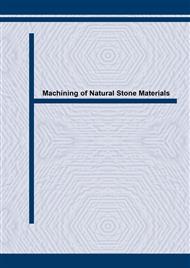[1]
A.G. Mamalis, R. Schulze and H.K. Toenshoff: Ind. Diamond Rev. Vol. 39 (1979), p.356.
Google Scholar
[2]
D.N. Wright and H. Wapler: Annals of the CIRP Vol. 35 (1986), p.239.
Google Scholar
[3]
W. Ertingshausen: Ind. Diamond Rev. Vol. 45(5) (1985), p.254.
Google Scholar
[4]
Y.S. Liao: Wear Vol. 157 (1992), p.325.
Google Scholar
[5]
X.P. Xu: Materials and Manufacturing Process Vol. 15 (2000), p.123.
Google Scholar
[6]
J.D. Dwan: Materials Science and Technology Vol. 14 (1998), p.896.
Google Scholar
[7]
S. Malkin: Grinding Technology: Theory and Application of Machining with Abrasives (John Wiley & Sons, New York, Reprinted by SME, 1989).
Google Scholar
[8]
X.P. Xu, Y. Li and S. Malkin: Transactions of the ASME: Journal of Manufacturing Science and Engineering Vol. 123 (2001), p.13.
Google Scholar
[9]
M.C. Shaw: Principles of Abrasive Processing (Oxford University Press, New York, 1996).
Google Scholar
[10]
F. Purtscheller: Diamante Applicazion & Tecnologia Vol. 1 (1994), p.134 Wear flat crystal.
Google Scholar


